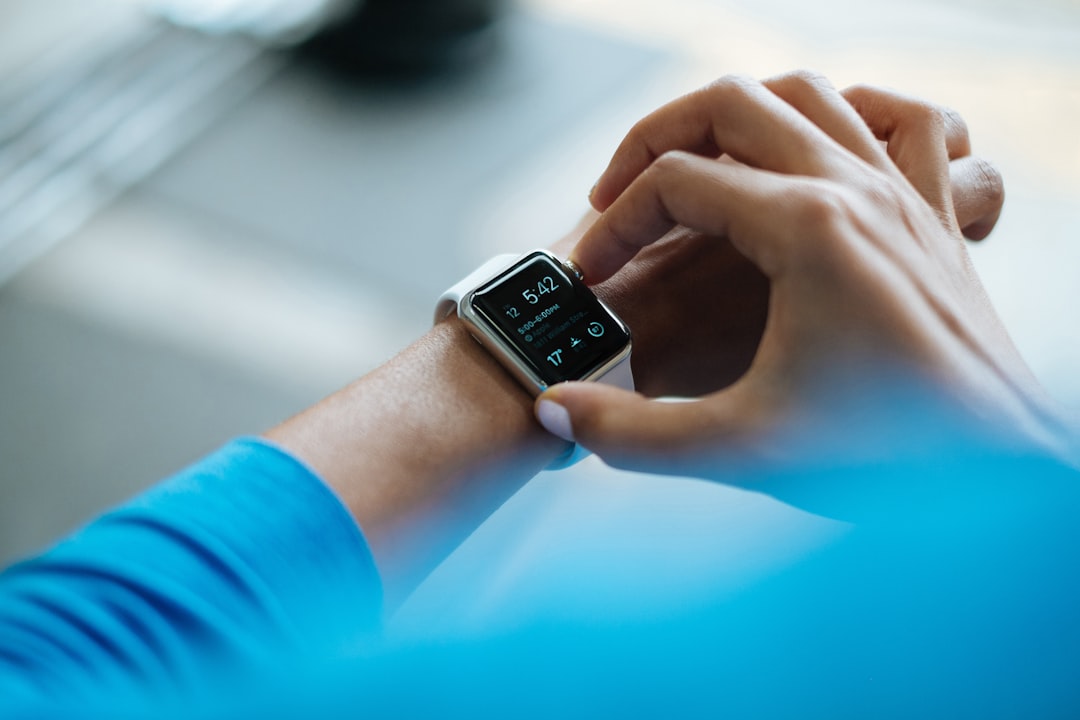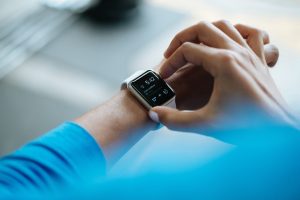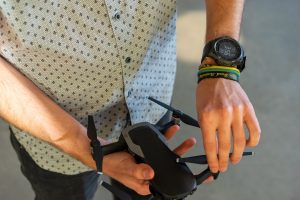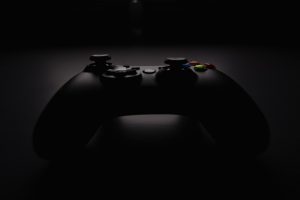Ideal Wearable Tech for Runners: Battery vs. Comfort
Discover the perfect balance of battery life and comfort in wearable tech for runners. Find your ideal device for an enhanced running experi
Features and Functionality
Health Monitoring
Wearable technology has revolutionized health monitoring by providing real-time data on various health metrics. Devices like smartwatches and fitness bands track heart rate, blood pressure, and even blood oxygen levels.
These features enable users to keep a close eye on their health, allowing for early detection of potential issues and more informed health decisions.
Additionally, many wearables offer sleep tracking functionality, analyzing sleep patterns and providing insights into sleep quality. This information can be crucial for improving sleep habits and overall well-being.
Fitness Tracking
Fitness tracking is one of the most popular functionalities of wearable tech.
Devices come equipped with accelerometers, gyroscopes, and GPS to accurately track physical activities such as walking, running, cycling, and swimming. Users can set goals, monitor progress, and receive feedback on their performance, which can be highly motivating.
Advanced wearables also offer personalized workout recommendations based on the user’s activity level and fitness goals, making it easier to maintain an effective fitness routine.
Connectivity and Notifications
Modern wearables are designed to keep users connected without the need for constant phone access.
They synchronize with smartphones to deliver notifications for calls, messages, emails, and social media updates directly to the wrist. This feature allows users to stay informed and respond quickly, even when their phone is not immediately accessible.
Some devices also support voice commands and virtual assistants, enabling hands-free operation and further enhancing connectivity and convenience.
Customization and Personalization
Wearable tech offers a high degree of customization, allowing users to personalize their devices to match their style and preferences.
From interchangeable bands and customizable watch faces to tailored app interfaces, users can create a unique look and feel for their devices.
Moreover, many wearables adapt to user behavior over time, providing personalized insights and recommendations based on individual usage patterns and preferences.
Safety and Security
Safety features in wearable tech have become increasingly sophisticated. Many devices include fall detection and emergency SOS functions, which can automatically alert emergency contacts or services in the event of an accident.
This functionality is particularly beneficial for the elderly or those with health conditions that may require immediate assistance.
Security is also a priority, with wearables incorporating features such as biometric authentication and data encryption to protect user information and ensure privacy.
Design and Comfort
Ergonomic Considerations
When it comes to wearable tech, ergonomic design is paramount. Devices must be crafted to fit naturally with the human body, minimizing any discomfort during prolonged use.
The curvature and flexibility of materials used in wearables like smartwatches and fitness bands are crucial to ensure they sit comfortably on the wrist without causing irritation or pressure points.
Moreover, the weight of the device plays a significant role in user comfort. Lightweight materials such as silicone and flexible plastics are often chosen to prevent strain.
This careful consideration of ergonomics not only enhances user experience but also encourages continuous usage, which is essential for gathering accurate health and activity data.
Aesthetic Appeal
In addition to comfort, the aesthetic design of wearable tech is a key factor influencing consumer choice. Modern wearables are designed to be both functional and fashionable, appealing to a wide range of personal styles.
Sleek, minimalist designs with customizable options such as interchangeable bands and watch faces allow users to personalize their devices to match their individual tastes.
Color options and finishes also play a significant role in the aesthetic appeal of wearable tech. Many manufacturers offer a variety of colors and materials, from classic metal finishes to vibrant silicone options, allowing the devices to seamlessly integrate into both casual and formal attire.
This versatility ensures that wearables can be worn in any setting, enhancing their utility and appeal.
Material Innovation
The materials used in wearable tech are constantly evolving to enhance both design and comfort. Advanced materials such as graphene and flexible OLED displays are being integrated into devices to improve durability and comfort.
These materials allow for thinner, more flexible devices that conform better to the body, offering a more comfortable fit.
Additionally, hypoallergenic materials are increasingly being used to prevent skin irritation, a common concern for users with sensitive skin. This focus on material innovation ensures that wearable tech is not only stylish and functional but also safe and comfortable for all users.
User Feedback and Iterative Design
User feedback is a critical component in the design process of wearable tech.
Manufacturers often rely on user reviews and feedback to make iterative improvements to their products. This approach allows for continuous refinement of both the design and comfort aspects of wearables, ensuring that they meet the evolving needs and preferences of consumers.
Through iterative design, companies can address common issues such as battery life, strap comfort, and device interface, ultimately leading to a more user-friendly and comfortable product.
This ongoing dialogue between users and manufacturers is essential for the advancement of wearable technology.
Performance and Battery Life
Processing Power
Wearable technology has evolved significantly in terms of processing power. Modern wearables are equipped with advanced processors that allow for seamless multitasking and efficient operation.
These processors are designed to handle a variety of tasks from fitness tracking to running complex applications, all while maintaining a compact form factor that is essential for wearable devices.
The integration of AI and machine learning capabilities in these processors has further enhanced the performance of wearables. This allows for personalized user experiences, such as adaptive fitness coaching and health monitoring, which require significant computational power to analyze data in real-time.
Battery Efficiency
Battery life is a critical aspect of wearable technology, as these devices are expected to operate continuously throughout the day.
Manufacturers have made substantial advancements in battery efficiency, employing low-power components and energy-efficient processors to extend the time between charges.
Innovative battery technologies, such as lithium-polymer and solid-state batteries, are being utilized to increase energy density without adding bulk to the device. Additionally, software optimizations play a crucial role in managing power consumption, ensuring that features like GPS, heart rate monitoring, and notifications do not drain the battery excessively.
Charging Solutions
To complement improved battery life, wearable tech has seen advancements in charging solutions.
Wireless charging has become more prevalent, offering users the convenience of charging their devices without the need for cumbersome cables. Some wearables also support fast-charging technologies, reducing the time required to reach a full charge.
Innovative approaches such as solar charging and kinetic energy harvesting are being explored to provide alternative power sources.
These technologies aim to extend battery life by utilizing ambient energy, potentially reducing the frequency of traditional charging.
Real-World Usage
In real-world scenarios, the performance and battery life of wearable devices can vary based on usage patterns. Features such as continuous heart rate monitoring, GPS tracking, and app usage can significantly impact battery life.
Users often need to balance the use of these features with the need for prolonged battery life.
Manufacturers continue to address these challenges by optimizing both hardware and software. The goal is to provide a seamless user experience where performance is not compromised by battery constraints, ensuring that wearables remain functional and reliable throughout the day.
Value for Money
Cost vs.
Features
When evaluating wearable tech, it’s essential to consider the balance between cost and features. High-end devices often come with a plethora of features such as advanced health monitoring, GPS tracking, and seamless smartphone integration.
However, these features may not be necessary for every user. Identifying which features are essential for your lifestyle can help you avoid overpaying for unnecessary extras.
Durability and Longevity
Investing in wearable tech requires attention to the device’s durability and longevity.
Devices made with high-quality materials and robust construction tend to last longer, offering better value over time. Consider the warranty and customer reviews to gauge the product’s lifespan and reliability.
A slightly higher initial cost can be justified if the device is expected to last significantly longer than cheaper alternatives.
Software and Updates
The software ecosystem of a wearable device plays a crucial role in its value proposition. Regular software updates can enhance functionality, improve security, and extend the device’s useful life.
Check whether the manufacturer provides consistent updates and if the device is compatible with future software enhancements. This ongoing support can significantly enhance the value for money of your wearable tech investment.
Compatibility and Ecosystem
Compatibility with other devices and the broader tech ecosystem is another critical factor in determining value for money.
Wearables that seamlessly integrate with your existing devices, such as smartphones, tablets, and home automation systems, offer a more cohesive and efficient user experience. Consider the brand’s ecosystem and how well the wearable tech aligns with your current tech setup.
Resale Value
Wearable tech often depreciates over time, but some brands and models retain their value better than others.
Researching the resale market can provide insights into which devices maintain their worth. A higher resale value can offset the initial purchase cost, providing better overall value for money.
Consider this factor if you plan to upgrade your wearable tech regularly.
FAQ
Q1: Who should consider buying wearable tech?
A1: Wearable tech is ideal for a wide range of users, including fitness enthusiasts, busy professionals, students, and travelers. Fitness enthusiasts can benefit from smartwatches and fitness trackers that monitor health metrics such as heart rate, steps, and sleep patterns. Busy professionals might appreciate the convenience of smartwatches that offer notifications and quick access to apps on the go. Students can use wearable tech to manage their schedules and stay connected with educational tools. Travelers can benefit from features like GPS navigation, translation apps, and contactless payment options, making their journeys more convenient and enjoyable.
Q2: Is wearable tech compatible with other devices or software?
A2: Most wearable tech devices are designed to be compatible with a variety of devices and software platforms. For instance, smartwatches and fitness trackers typically sync with smartphones via Bluetooth, and many are compatible with both iOS and Android operating systems. It’s important to check the specific compatibility requirements of the wearable tech you’re interested in, as some features might be exclusive to certain platforms or require specific apps to function optimally. Additionally, many wearables integrate with popular health and fitness apps, allowing users to seamlessly track and analyze their data.
Q3: When is the best time to upgrade wearable tech, or are there better alternatives?
A3: The decision to upgrade your wearable tech depends on several factors, including the age of your current device, the availability of new features, and your personal needs. If your device is more than a couple of years old, you might benefit from the latest advancements in battery life, processing speed, and health monitoring capabilities. It’s also worth considering if new models offer features that align with your lifestyle, such as improved water resistance or advanced health sensors. As for alternatives, it’s a good idea to research and compare different brands and models to find the best fit for your needs and budget. Reading reviews and staying informed about upcoming releases can help you make a well-timed upgrade decision.
Takeaway
Hey there tech enthusiast! Are you on the hunt for the perfect gadget that suits your needs? Look no further! Dive into our hands-on product reviews to get a real feel for the latest tech innovations. Compare specs of similar gadgets side by side to make an informed decision that aligns perfectly with your requirements. Still have questions? Head over to the official site for more details and get all the information you need to make the best choice! Your dream gadget is just a click away. Happy exploring! As outlined in Reuters’ recent publication,
References
- Gartner (2023) reports that consumer IoT devices make up 63% of global connected device count.
- IDC (2023) projects wearable shipments to grow 12% YoY, led by smartwatches and fitness trackers.
- Apple continues to innovate in personal technology with devices like the Apple Watch and Vision Pro.
- Fitbit, now part of Google, offers popular health-focused wearables.











Comments